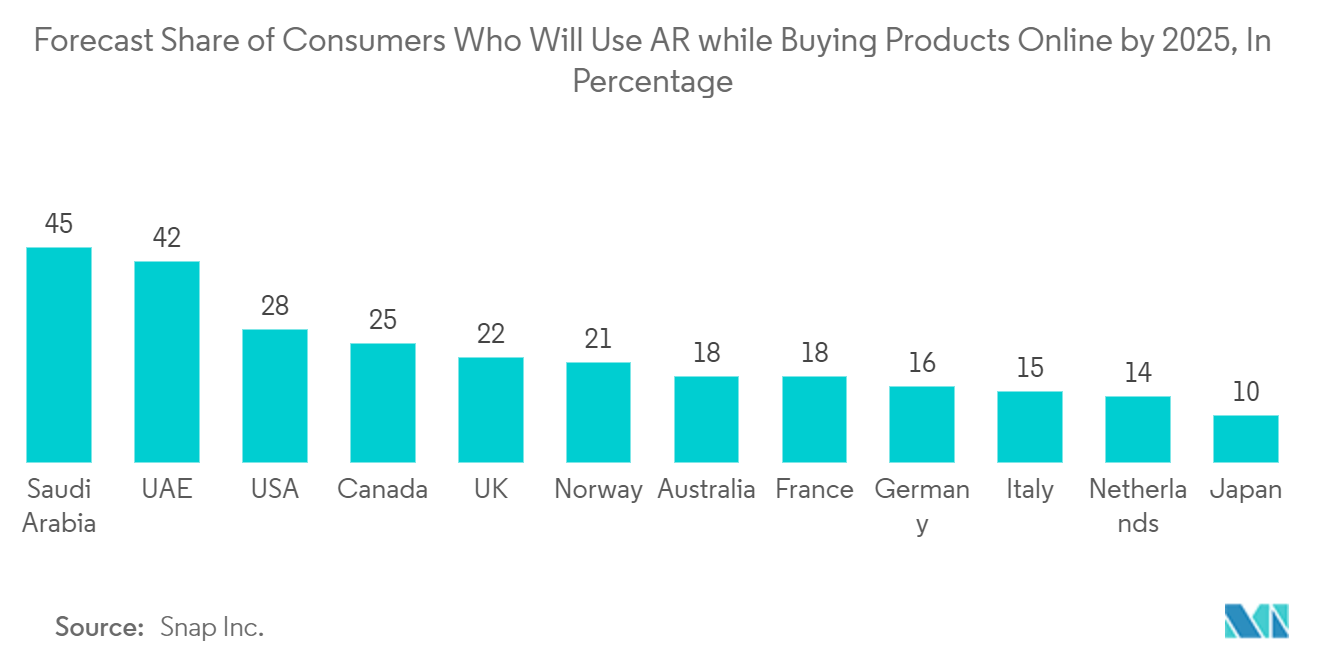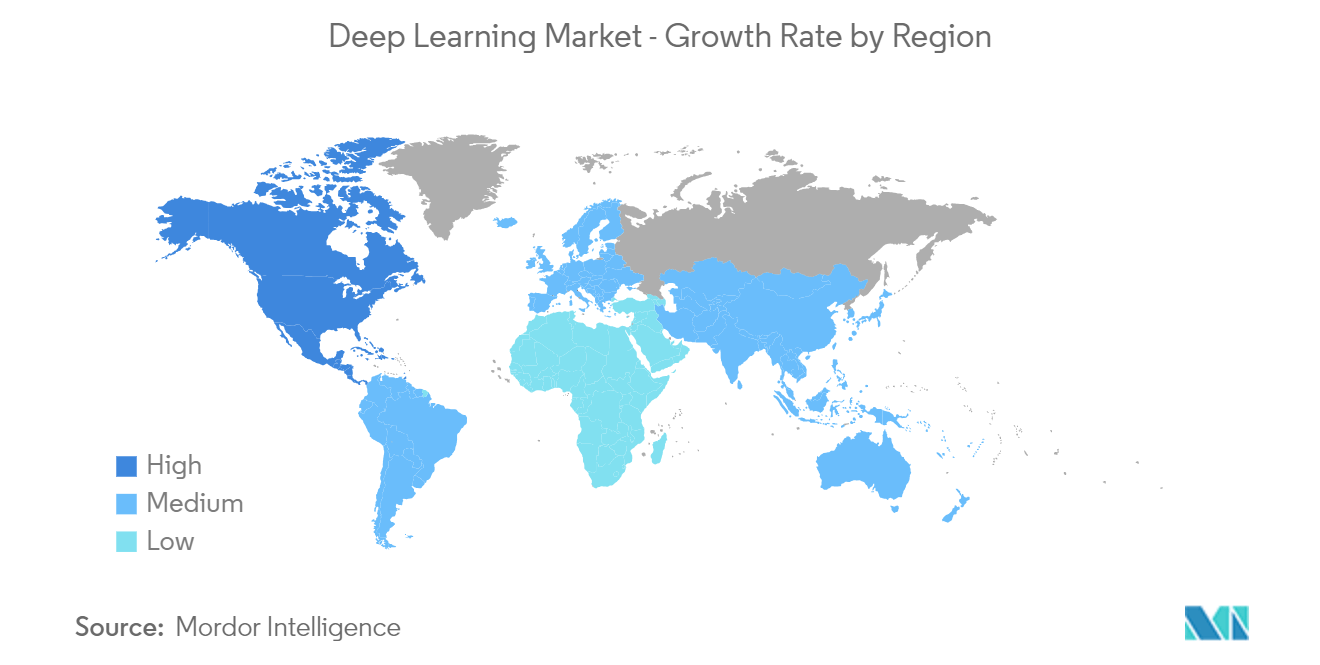Market Trends of Deep Learning Industry
Growing Use of Deep Learning in Retail Sector is Driving the Market
- The retail industry has seen a drastic shift in its base of operations in recent times, with many notable brands choosing to reduce the number of onsite offerings in favor of online service. For retailers to remain viable, they need to meet customer expectations, act accordingly, or risk losing loyalty. It is also becoming vital for retailers to adopt burgeoning technologies to make this a reality. Deep learning allows retailers to automate customer experience and streamline processes in a way hitherto unknown. For example, shelf analytics in online scenarios can help with useful recommendations of merchandise and quick classification, which allows customers to make correct choices with more support more quickly.
- Online retailers such as Walmart are starting to use AI to get product recommendations from customers but are just barely utilizing the full potential the technology can offer. By using deep learning, retailers can truly harness the power of AI to optimize user experiences and automate time-consuming tasks. For instance, online retailers can use Deep Learning to automatically tag visual data to improve many facets of the user experience. They can use AI to refine the search and return better results to search queries or enhance product images' quality, especially low-quality product photos using color enhancement. Moving forward, retailers can quickly gather data and analyze information automatically using Deep Learning technology.
- A study by Snowflake Computing Harvard Business Review points out that retailers who choose to make data-driven decisions have survived longer. Undoubtedly, retail is rapidly becoming extremely data-oriented. As per the same study, 89% of retailers consider gaining improved insights into customer expectations a significant goal. The models that Deep learning in retail utilizes are sophisticated and advanced enough to handle the challenges that machine learning models fail at. For example, deep learning in retail application models is intelligent enough to understand that the release of smartphones with larger screens can eat up tablets' sales. In the case of missing data, deep learning in retail could learn from patterns whether an item isn't selling or is out of stock.
- These days, demand forecasting and customer intelligence are only two examples of distinct internal activities that retail and consumer products companies utilize intelligent automation to carry out. Executives, however, intend to integrate intelligent automation and deep learning into more intricate operations over the course of the following three years. These procedures call for larger data sets, external cooperation, and extra system connections. The estimated penetration is anticipated to increase to above 70% across organizational domains that span the value chain over that period.
- For instance, sports footwear, apparel, and equipment manufacturer Nike Inc. has created a system that allows consumers to design their own shoes and wear them after they leave the store-utilizing the fresh automated system. Customers who participate in The Nike Maker Experience put on a pair of unadorned Nike Presto X sneakers and customize them via voice commands. The technology shows the buyer the created shoes using augmented reality, object tracking, and projection systems.

North America is Expected to Hold Major Share
- North America is expected to have a significant share in the global deep learning market, owing to the sustained rise in considerable data volume, coupled with the anticipated increase in the demand for the integration of DL in consumer-centric solutions of enterprises. The growing emphasis on predicting the key trends and insights related to customer behavior and operations has been a critical driver for significant enterprises to veer toward the use of AI and big data for driving value and offering a personalized experience. For instance, Netflix built a machine learning platform based on JVM languages, like Scala. The platform helps break viewers' preconceived notions and find shows that they might not have initially chosen.
- In order to increase mission effectiveness, stretch workforce capacity, prevent waste, fraud, and abuse, and increase operational efficiency, agencies in the US now rely heavily on artificial intelligence and machine learning technology. The advancement of AI technology, a rising number of AI use cases and applications, and the expansion of commercial solutions have all helped to expand the usage of AI outside the R&D activities at specialized organizations like NASA and the Department of Energy.
- The United States Department of Transportation formed a new safety regulation to help eliminate blind zones behind vehicles and view people present behind vehicles. According to National Highway Traffic Safety Administration stats, around 292 fatalities and 18,000 injuries occur due to back-over crashes involving all vehicles. Such regulations are anticipated to encourage the adoption of ADAS, thereby offering opportunities for the region's deep learning market. Furthermore, the region is also seeing an increase in investments from automakers to develop advanced solutions, driving the growth of the market.
- Moreover, companies in the US are continuously expanding on their R&D to develop new products. For instance, in December 2022, Google LLC announced the launch of a new tool in order to enable users to develop artificial intelligence models in Google Sheets. The tool, dubbed Simple ML, is available in beta. It's provided as an add-on to Google Sheets that users can download at no charge.


